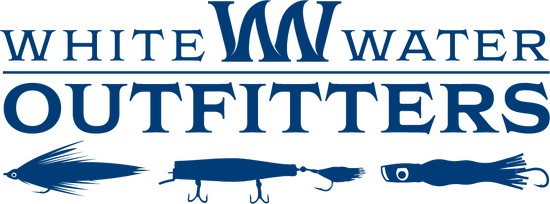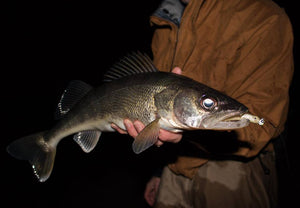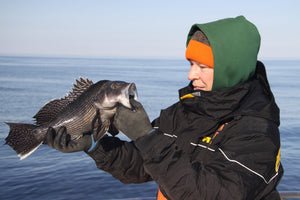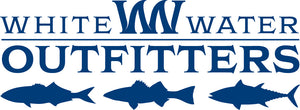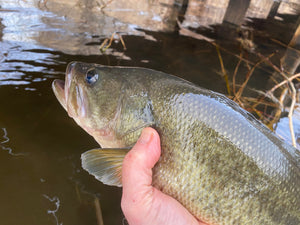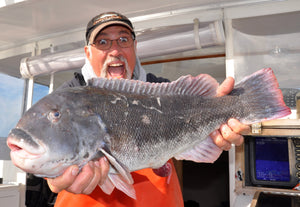Hit Connetquot For Winter Trout

Well, it’s that time of year again. There’s skim ice on the ponds, the threat of snow in the air, and a pile of fishing gear in your garage that needs sorting, cleaning, repairs and maintenance. That can only mean one thing for Long Island’s fly-fishing fans: It’s prime time for winter trout at Connetquot River State Park Preserve in Oakdale!
Indeed, you can catch trout on the fly year-round at this 3,743-acre oasis in the middle of Suffolk County, but it’s during the winter season that its jewel of a trout stream truly shines brightest. Although there are nearly 20 Long Island waters stocked with trout, none can compare to “The Conny” when Old Man Winter is at the helm.

Healthy Connetquot rainbow caught by Jeff Lomonaco during a winter session.
True, this a pay-to-play location and the fishing is strictly for fly-casters, but the consistency of the action and size of the rainbows and brooks you’ll encounter even when the air temperature dips below the freezing mark is unmatched locally. Typical trout here run 8- to 14 inches, but battlers in the 16- to 20-inch class are a possibility at any time - and larger fish weighing 4 to 6 pounds or more are landed every year.
We’ve covered the basics of winter prospecting here in a past blog titled “The Skinny On The Conny,” and that’s a good read if you need a review or are making your first trips to sample the action. That leaves us free now to dig a little deeper into specific tips and tricks to connect with some bigger fish when the weather and water are at their coldest, so let’s dig in.
Good Time To Explore
Winter is a good time to really get to know the Connetquot River on an intimate level, which can ultimately help improve your fishing here on a year-round basis. While it’s common knowledge amongst regulars to the park that beats 16A through 14 provide the most consistent action on a daily basis, some of the lower beats also provide good shots at big fish during the winter months and are worth investigating. If you’ve never wandered down to beats 12, 9 or 8, the winter is a great time to check them out as the water is clear and the lack of foliage along the banks allows discerning eyes to spot deeper holes and runs that are often obscured by the shadows of a summer sun. Be certain to thoroughly investigate any turns or twists in the river for pockets of deeper water carved into the bank as the current negotiates the bends – this is where the biggest fish often hold. You’ll also find big fish potential at the Grist Mill beats at the lower end of the river.

Scuds fished under an indicator are a great bet during the winter, and all year round.
Low And Slow
No matter which beats you fish during the winter, present your flies deep and take your time retrieving them as a general rule. Try to keep your patterns less than 6 inches from the bottom at all times unless that approach just simply isn’t working, and you want to jig your nymph or streamer a bit to change things up.
In terms of gear to make the proper winter presentations, you’ll need a floating sink-tip, weight-forward fly-line, and a 9-foot Rio Powerflex® Trout tapered 3X - 5X leader (or Rio Fluoroflex Strong Tippet/Leader Material for extra stealth). Adding a strike indicator is a nice touch, too. A 4- or 5-weight rod is a good choice to get the job done given the river’s relatively narrow breadth. opt for the 5wt. or maybe even a 6wt. if you intend to focus seriously on bigger fish or more streamer fishing.
If you need to put together a new setup, check out our Redington Path Fly or TFO NXT combos for getting started, or the TFO Signature Series II, or Pro II series if you are a little more serious but still looking for a cost-effective option. Combine any of these with a TFO NXT or Redington Behemoth reel and you’re set to go. A pair of polarized sunglasses are also a necessity, both for eye protection and for spotting fish before they spot you. Check out our selection of Bajio Sunglasses. They’ll get the job done with style.
As for big fish patterns, larger choices including Wolly Buggers, Stone Fly nymphs, Matukas, Zonkers and Gray Ghost streamers all have followings among trophy hunters here. Alternating these with smaller, more traditional bead-headed nymph sizes and styles is a good way to hedge your bets towards more action while awaiting that fish of a lifetime to swim into view.

While not wild fish, Connetquot is known for it's big mutant brookies.
Approach And Wade Quietly
Big fish get that way by being smart and Connetquot River’s trophy class trout are no exception. With the water crystal clear, they’ll react unfavorably to pushy wading, moving shadows, or heavy footsteps telegraphing the arrival of an angler along the bank. It’s never a bad idea to keep a low profile when targeting trophy fish. During the winter months on Connetquot River, though, it’s essential for success.
Jigging Works
Although the time-honored methods of slow drifting bead-head nymphs through pockets of deep water and working streamers at a steady but slow pace are generally reliable presentations during the winter months here, don’t be afraid to add a slight jigging motion to end of your presentations. This can be especially productive after two or three consecutive days of warm weather when the trout can be surprisingly aggressive. There’s no need to go crazy with this suggestion, though, as a slight twitch of the rod just before your fly swings out is often all you need to spark the bite.
In another take on jigging, when working areas with clean bottom you might occasionally allow your weighted or bead-head offering to settle into the sand or silt before popping it up into the current with a quick flick of the wrist. Keep the pop short – the fly should come no more than 6 to 8 inches above the bottom before beginning its descent. Trying this 3 to 5 times at the end of a cast can be very effective – especially when larger brook trout are in play.
Sleep In
Since winter trout tend to favor rising temperatures, being first on the water doesn’t hold as much value as it does in the summer so it’s okay to get a late start and fish an afternoon session. That’s not to say you can’t have super results early in the day, just that giving the sun some time to warm the water isn’t a bad idea.

Finishing Touches
Since big fish are the name of the game now, don’t forget to bring along a landing net. Fishpond’s Nomad is a high quality, easy-to-handle choice for waders. Carrying along forceps makes for easier releases, too.
Lastly, dress for the elements. That means wearing a base layer of thermal or insulated clothing, fleece pants, wool socks, a warm beanie-style hat, waterproof gloves and a waterproof jacket. For waders and wading boots, check out the Simms Tributary entries or match a pair of Freestone Waders to the Tributary boots.
First Come, First Served
Entrance to the park is from the westbound lane of Sunrise Highway (Rt. 27) in Oakdale. For winter sessions, the park is open for two 4-hour fly fishing-only sessions, Tuesday through Sunday, 8 a.m. – 12 p.m., and from 12 p.m. – 4 p.m. There is an $8 parking fee, and $25 charge for each fishing session. A NYS freshwater fishing license is also required.
Reservations are recommended but not required at any time of the year, and fishing “beats” are assigned on a first-come, first-served basis. Those with reservations get to choose first. Be aware only barbless flies are allowed to be used here. Also, you can keep 2 trout of any size - but your fishing session ends immediately once you’ve creeled a second fish.
For reservations, call 631-581-1005.
- Bryce Poyer
